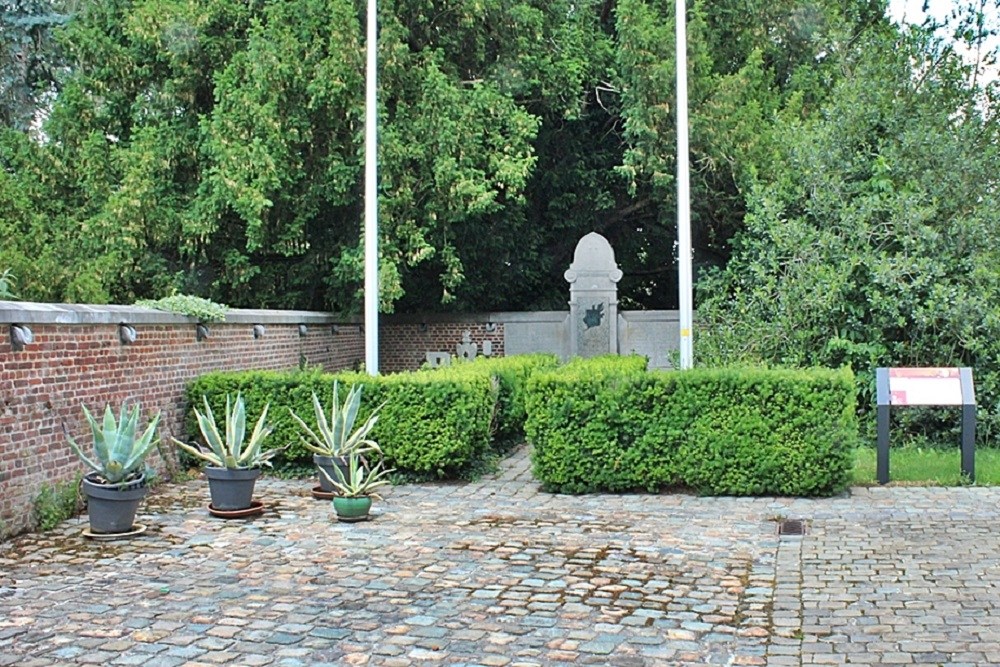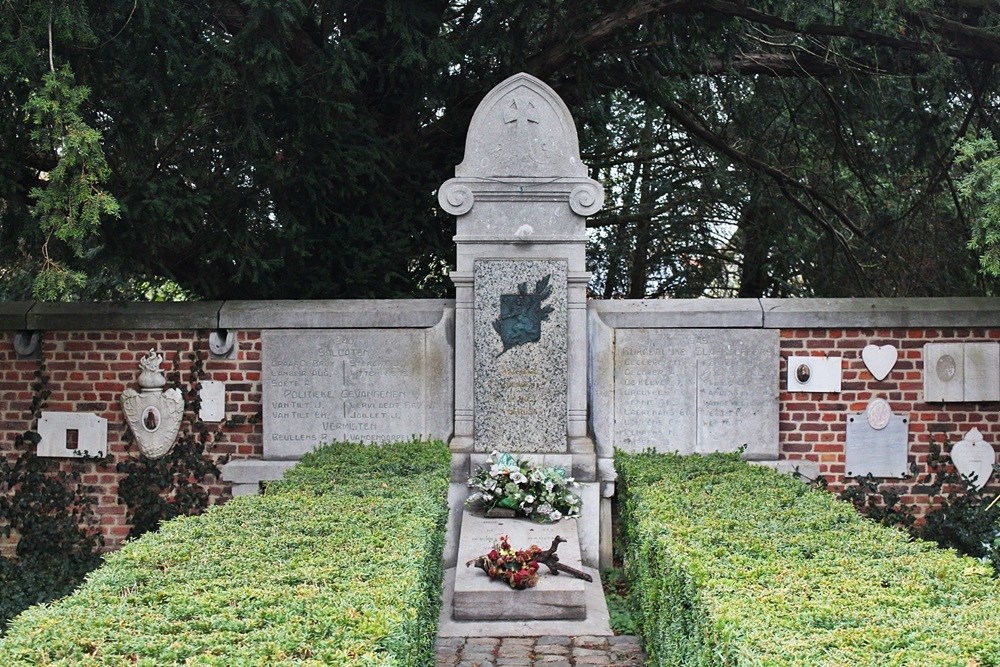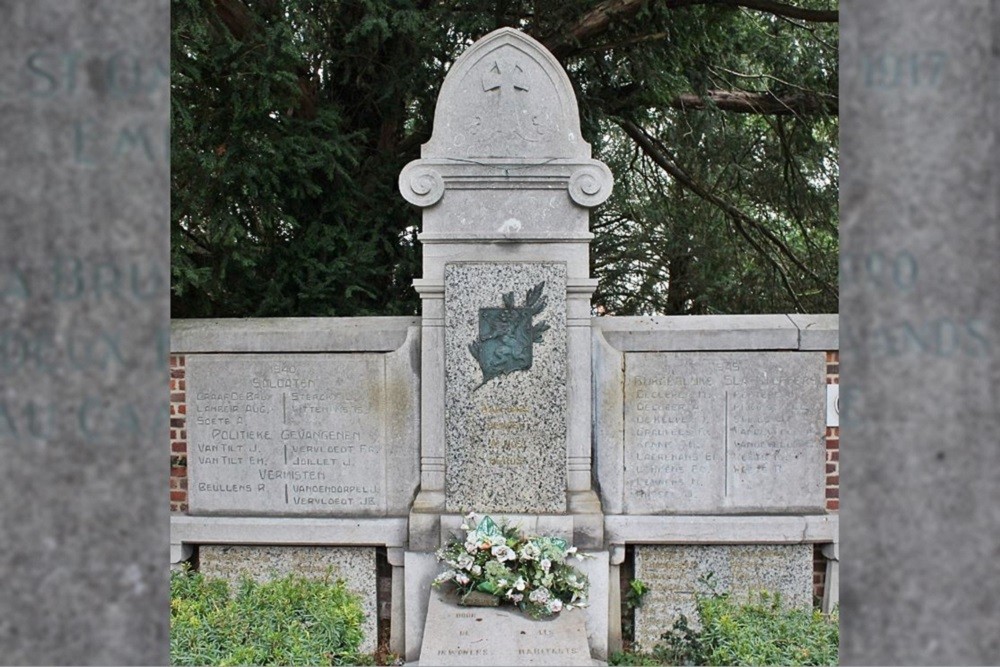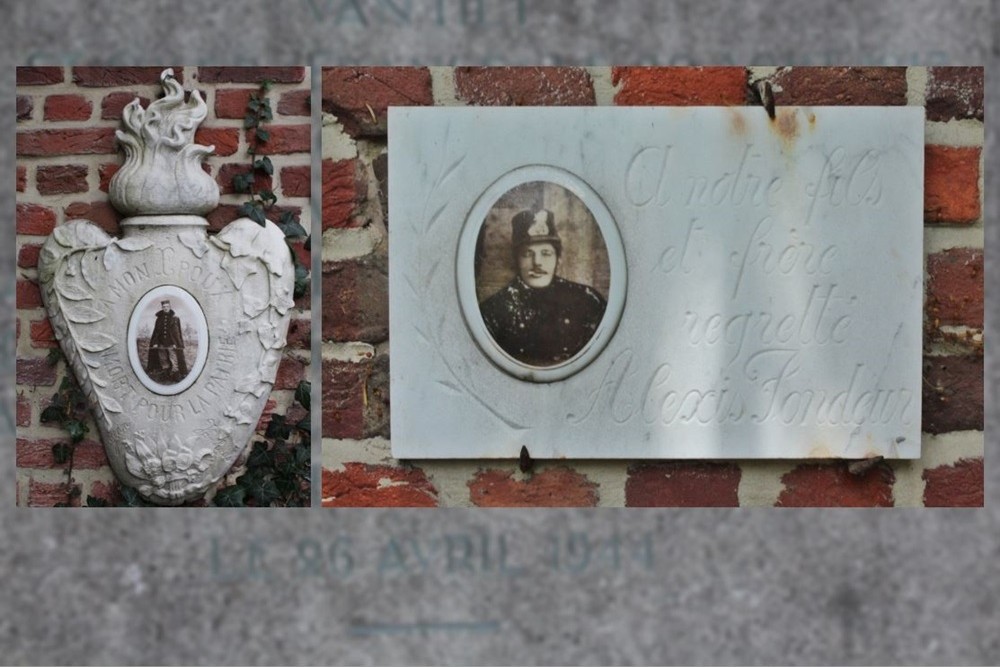War Memorial Holsbeek
This memorial commemorates the fierce fighting in Holsbeek between 10 and 13 September 1914, when the Belgian army for the second time since the start of the war attacked the Fortress Antwerp to delay the advance of the Germans towards France.
In contrast to the horrors that took place on August 19, 1914 in the nearby town of Aarschot and the neighboring villages of Gelrode and Wezemaal, the entry of the German troops into Holsbeek was relatively calm. That changed when the Belgian army attacked on 9 September and liberated Aarschot that same day. On September 10, Lieutenant General Dossin ordered the attack on Leuven. The 7th Mixed Brigade advanced in two wings from Aarschot over Holsbeek to Leuven and, despite heavy resistance - there is hand-to-hand fighting with a bayonet - they were able to capture their objectives a few kilometers from Leuven. Due to this advanced position, however, they threatened to become isolated and already during the night the order was issued to withdraw in a northerly direction to Gelrode and Wezemaal. On September 12, the 6th Mixed Brigade again successfully launched the attack, conquered ground but were driven back to Wezemaal by a German counter-attack prepared by artillery. The 7th Mixed Brigade advanced from Gelrode via Wezemaal and Holsbeek and fought fiercely south of the municipality in the Pollepelbos. However, they were not given the opportunity to exploit this profit. Because the situation of the Belgian army on the Dijle in nearby Rotselaar was hopeless, the order came to gradually withdraw.
That day, the Germans set fire to about 30 homes in Holsbeek. Tilt Castle also went up in flames. Two civilians died in the fighting. A civilian who was imprisoned in Leuven on 28 August died of assault in Münsterlager. 32 soldiers died in Holsbeek and were buried in the local cemetery of the Sint-Maurus church.
The monument
It is rather exceptional that a monument is erected locally for the soldiers who died on the territory of the municipality. Most of the soldiers from these combat operations were buried in the military cemetery of Veltem-Beisem. Colonel van Tilt (of the castle of Holsbeek) insisted that the fallen soldiers be kept in Holsbeek and already on September 16, 1915 - one year after the fact! - it was decided to erect a monument. The monument, funded by the municipality and its inhabitants, would not be inaugurated until September 12, 1921. The design is by architect De Buck from Leuven. Interesting is the collection against the cemetery wall of the original and personal grave applications.
Do you have more information about this location? Inform us!
Source
- Text: Jan Rymenams
- Photos: Jan Rymenams
Nearby
Museum
Point of interest
- Former Gestapo Building - Leuven
- Peace Carillon Aarschot - Aarschot
- Glass Window Church Of Our Lady Aarschot - Aarschot
Monument
- Memorial Jacques en Emiel Van Tilt - Holsbeek
- Memorial Airmen Albert Soete and Guy De Briey - Holsbeek
- War Memorial Linden - Linden (Lubbeek)
Cemetery
- Belgian War Graves Holsbeek - Holsbeek
- Russian War Grave Linden - Linden (Lubbeek)
- Commonwealth War Grave Linden - Linden (Lubbeek)
Remembrance Stone
- Stumbling Stones Martelarenlaan 179 - Kessel-Lo (Leuven)
- Stumbling Stones Koning Albertlaan 108 - Kessel-Lo (Leuven)
- Stumbling Threshold Naamsestraat 73 - Kessel-Lo (Leuven)
Fortification
- Kw-Linie - Bunker A2 - Tildonk (Haacht)
- KW-Line - Bunker A1 - Wakkerzeel (Haacht)
- KW-Line - Railway Bunker F7 Heverlee - Heverlee (Leuven)







